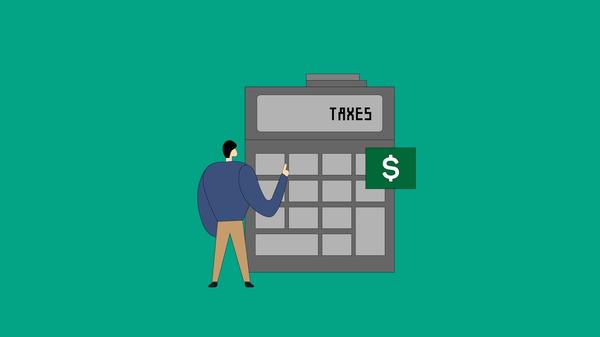A word of caution before we begin: Options trading is complex - call options, specifically, are a very complex financial instrument. Using options is kind of like using dynamite - useful, but dangerous to a beginner. You've been warned.
About Options Trading
While there are actually many different types of options trading, when people talk about options, they usually refer to call and put options. That's because they're the most common forms of options, and the easiest to understand.
In this article, let's talk about call options trading. This form of options gives the holder the right to buy an stock at a fixed price.
Let's say for argument's sake that GE is worth $25 right now, you can buy a call option on General Electric stock, which would give you the right to purchase GE shares at $that price. We can also buy call options on different fixed price points if we want to - for example, at $27 a share. This fixed price ($25, $27, etc.) is called the 'strike'.
Call options have a time limit on your rights, beyond which your rights expire. For example, we can buy call options on GE that expires 3 months from now, or we can buy call options that expire 1 year from now. There are many available expirations.
The price of call options vary for each combination of strike and expiry. You can take a look at the current prices of call options on GE. But let's say for simplicity sake, that call options had a strike of $25 that expire on September 2024 and cost around $2.35 per option, while call options with a strike of $27 that expires on Jan 2025 cost around $1.95.
Risks Of Using Call Options For Options Trading
Here's why you should be careful with call options. If the stock price is at or below the strike price by the time it expires, the option becomes worthless.
For example, let's say you spent $235 buying 100 call options on GE at $25 strike that expires on September 2024. Let say that when September 2024 came, GE shares were priced at $24. What's the value of these options? Zero.
Let's examine why. If you exercise the option, you would pay $2,500 to buy 100 shares of GE. But there's no reason to do that when you can buy 100 shares of GE for $2,400 from the stock market the same day.
If you had just bought GE at $27 a share today, and if shares go down to $24, you would have suffered about 11% loss. But if you bought call options instead, you would have lost 100% of your money.
Potential Rewards
But conversely, there's also the opportunity to generate much higher returns as well. Again, for simplicity sake, let's say if GE shares went up to $30 a share by January 2025, then the call options would be worth $500.
Why?
Because you can exercise the option and buy 100 shares of GE for $2,500, and on the same day, sell the 100 shares into the open market for $3,000. This would net you $500, or $5 per option. Now, since you had bought these options for $235, this would represent a 113% gain on your investment.
Similarities With Borrowing Money
For these reasons, you can almost think of call options as 'leveraged' investment. In other words, it's as if you borrowed money to buy shares. This is a very useful way to look at call options.
Let's say you opened a margin account with a brokerage. With a margin account, you can borrow money to purchase stocks. Let's say that you borrowed as much money as you possibly can to purchase GE stocks.
When GE stocks go up, you enjoy multiple times the benefit. For example, if you borrowed twice as much money as you put in to buy GE stocks, and if GE stocks go up 5%, you gain 15%.
On the other hand, if GE stocks go down, you feel multiple times the pain. For example, if GE stocks go down 5%, you would lose 15%.
But even if GE stocks stay at the same level, you would lose money. Why? Because you have to pay interest on the borrowed money. You can observe a similar phenomena happen with options.
Let's argue that GE stocks traded at around $27 a share. A call option that expired 3 months from now with strike at $27 would cost $0.80 per option. In other words, if GE price stayed at the exact same level, the holder would lose $0.80 per option.
Where The Analogy Breaks Down
However, there is one very important difference between borrowing money and call option trading, and that's limited liability.
Let's say you put down $1,000, borrowed $2,000 and bought $3,000 worth of GE stocks. Then, if GE stocks go down 50% so your stocks are worth $1,500, you're still on the hook for the full $2,000 in borrowings. So if you sold your stocks at $1,500, you still have to come up with the extra $500 to satisfy your lenders.
Not so with call options.
With call options, you lose at most what you put in. So if you bought $1,000 worth of call options, you can only lose up to $1,000. Of course, there's no free lunch - you pay a price for that protection, but there's value in that protection nonetheless.
That means that if used wisely, call options can actually reduce the risk of your portfolio. For example, if you buy 100 shares of GE for $2,700, you can potentially lose the full $2,700. But if you buy 100 call options for $235, you can only ever lose up to $235.
Yet, buying call options preserve most of the stock's potential upside. Going back to our example, if GE stocks suddenly doubles to $54 per share, owning 100 shares will give you a profit of $2,700. On the other hand, if you had bought 100 call options with strike at $25 for $235, your profit will be $2,665.
In other words, call options limit the maximum loss you can suffer, while preserving most of the upside potential.
But the skeptical among you will wonder: this sounds too good to be true. What's the catch?
The catch is that if GE stock doesn't move, the option holder loses money, above and beyond what you would pay for having borrowed money. That's because you pay for the privilege of limiting your loss while preserving your upside. This privilege that you pay for, is called 'optionality', and whether it makes sense to buy call options depend on the price of this optionality.
Therefore, options are considered cheap if you don't have to pay much for optionality. Conversely, options are expensive if you have to pay a high price for optionality.
Summary
If you want to participate in options trading, treat it as if you've bought stocks using borrowed money. The potential returns are great, but the potential losses are great also.
The good news is, you can only lose the amount you put in, so there's actually a way to reduce your portfolio's risk by using options. However, you pay for reducing this risk, and whether it makes sense to buy options depend on the price paid for reducing such risk.


